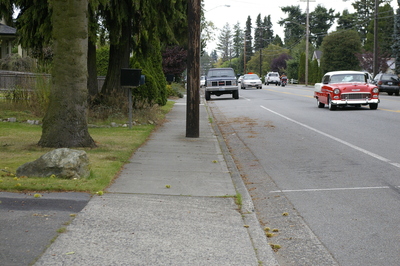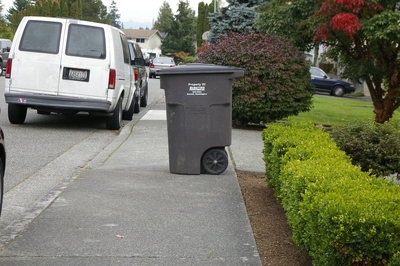For someone who uses a wheelchair, there are barriers and hazards everywhere – things that others may not see. But how do you raise visibility of the issue?

One of our longtime MS members, gamma, decided that a photo essay of the obstacles that exist in her neighborhood (considered a wheelchair-friendly community) and others would the best way to illustrate the problem. “My hope is that when this presentation is completed I can get it into the hands of people that can use it to raise awareness about unsafe situations for the wheelchair or stroller user,” she says.

What’s an example of a hazard or barrier? Wheelchair users at PatientsLikeMe – who number more than 1,300 and use both powered and manual wheelchairs – report having difficulty with potholes, cobblestone entrances, uneven sidewalks, narrow aisles, yellow bumps on ramps, heavy doors and more. But it’s easier to “see” these hazards and barriers than just list them. That’s why gamma is calling for photo submissions.

Have you encountered something in your neighborhood that would pose problems for a wheelchair user? Snap a photo to aid this grassroots patient project. Then send it to shalegamma@aol.com along with your full name for credit. Thanks in advance for your contribution!

Dave Clifford pointed me to this post via Twitter – thanks, @DCDave!
I love this idea, especially because the technology to crowdsource it has become so much easier, both the hardware (digital cameras, smartphones, broadband) and the software (PLM, Flickr, Facebook). The barriers to entry have been lowered so that anyone who is motivated can join in — and I know that people in wheelchairs are motivated!
It reminded me of another motivated group using technology to tell their stories: kids who want to be able to walk to & from school, but who live in areas without sidewalks or other safe paths. Check out this video:
Adams City High School: The Long & Scary Walk Home
EXCELLENT use of visuals. I think we (in general) are being “trained” by technology to skip over text and go straight to seeking photos or videos. A bit of a shame but that’s how it is!
When my nurse specialist first used the word “scooter” as a new option for my deteriorating health, I went home to think about it. As I walked the dog through my neighborhood I explored our streets with a new “eye” toward scooter/ wheeled accessibility. Sure enough it’s not using a scooter that scares me but the possibility that the device (which is supposed to offer “increased freedom” of mobility might actually REDUCE the area in which I can roam– due to curbs and other barriers!
I hope you can open peoples’ eyes toward making positive change in this area. Thanks much!
I love this as I have been thinking of doing documentation myself. This summer stopped at fast food place. Ramp access was at end of parking by dumpsters and of course parking was not smooth surface. Upon getting to door it opened from the other side so had to go past door, have someone open, then back into resturant!
I went to a local restaurant only to discover there was no ramp, only steps. When my husband went in and ask how he could get me in, they showed him a side door with a small porch and said you will have to pull her up and over the edge. Needless to say I did not give them my business. I am not a handcart of pepsi being delivered. Another occasion of barriers that come to mind was when I tried to buy a tag for my car. The only wheelchair access was on the lower end of the sidewalk where the tag office is, so we rolled down and got on the sidewalk only to stop because one of the local shops was having a sidewalk sale and had placed a table of wares outside. Between the table being in the way and the front of cars being over the sidewalk I couldn’t get through. People who manage stores and restaurants should have to spend an entire day in a wheelchair so they could see first hand how it is for those of us unfortunate enough to have to spend our lives in them.
I am a caregiver for my wife who has ALS. We recently traveled to New Orleans, LA. The French Quarter is absolutely discusting as far as handicaped access is concerned. Sidewalks are in terrible condition with many bricks missing. Ramps on corners have 2 and 3 inch drops. Ramps only appear at the corners and there are blockages on the sidwalks mid way between corners forcing the handicaped person to get out of the chair so the chair can be lowered to the street to cross them.
KT
Heavy and narrow doors are a challenge as are the refrigerated cases in grocery stores. Fortunately I have found other customers are quick to help. That also presents other challenges since I can no longer speak. I have found cruise ships very wheelchair friendly. Nonetheless You have to be thankful for the many improvements since the ADA.